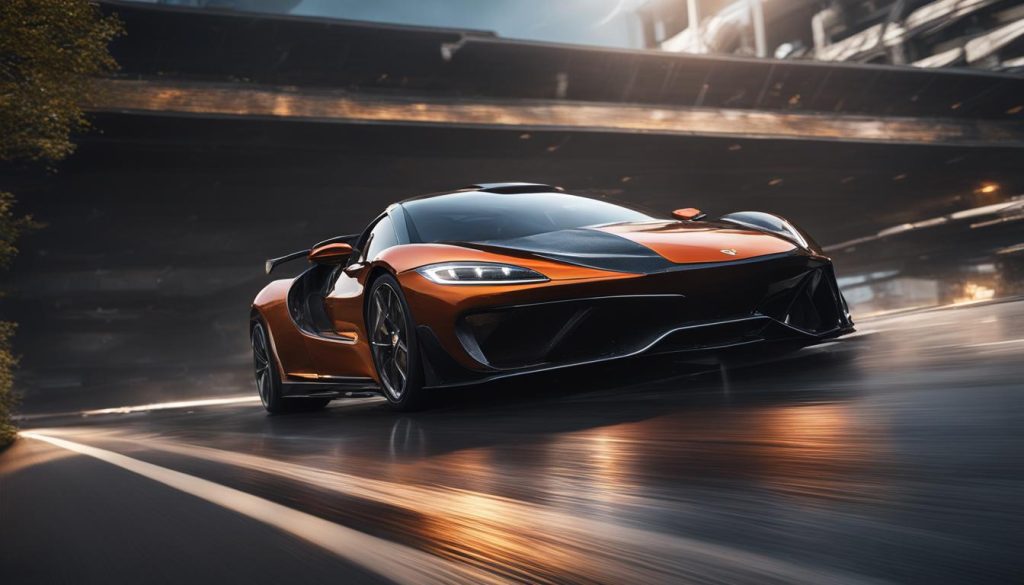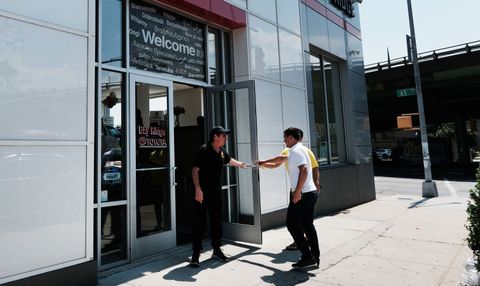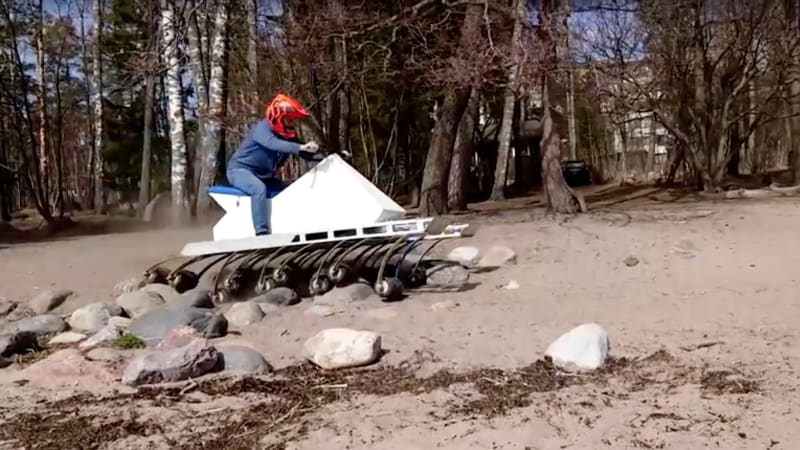- Wholesale used car prices actually went up in January and used inventory issues continue to plague dealerships, with a majority of consumers buying out their leases.
- Tensions between banks and dealerships are also boiling over as loan defaults and repossessions rise rapidly, with interest rates continuing to grow and financing incentives disappearing.
- If you can ride it out, experts continue to say inventories are bound to grow, allowing consumers to regain some leverage in the market.
For about two years now, the most common refrain in the automotive industry has been that cars are expensive and getting pricier by the day. With choked supply chains, shrunk workforces, and minimal materials to go around, manufacturers have simply had a hard time building new cars, meaning the few available have commanded high prices. So, as consumers continued to want and need reliable, personal transportation, a mass of used car consumers flooded a market that had little to offer them.
At its worst, average used car prices were reported as high as $33,513 in March 2022, with interest rates for used cars reaching an average of 10.57% through January. However, the US Bureau of Labor Statistics has recently seen used car prices beginning to fall, with Consumer Price Index statistics from January showing an 11.6% decline year over year. While this drop is genuinely sharp, the month-over-month decrease has been slight (on average 1.38%), based on data from July 2022 to the present.
Even so, experts say consumers shouldn’t rush out to buy a used car just yet. Analysis from Cox Automotive shows that while used car prices continue to fall slowly, stickers at the wholesale level actually went up 2.5% in January.
Additionally, Chief Economist at Cox Automotive, Jonathan Smoke, said used car supply is actually down, with a one-day drop in supply across dealerships nationwide from December to January and a 13-day supply lull year-over-year. Unfortunately for budding buyers, the lack of supply and increasing wholesale prices are set to curb any slight decrease in used retail prices, as dealerships scramble to keep inventory and end up buying at these higher rates.
“Given the rise of wholesale prices to start the year, it is not likely that CPI will continue to see used prices go down,” Smoke noted.
Astute consumers may wonder how there is a shortage of used cars if dealers aren’t facing the material shortages and supply chain challenges that have hindered new car production. There is no one concise answer, but experts say it’s a cataclysm of industry and worldly factors that trace back to the early pandemic days of 2020.
Diana Lee, an industry veteran with experience running dealerships, consulting for legacy manufacturers, and now creating OEM advertising and outreach plans as CEO and Founder of Constellation, said the ability to buy a used car at a reasonable rate may actually depend on where you live in the country.
Another leading factor in the used car shortage is the record-breaking number of consumers (about 80%) who have purchased their leases outright in the last two years. Lee told Autoweek the overall rate of returning lessees in the US fell about 7% over the last four years.
Typically, dealerships relied on those returning leased cars for additional inventory, often selling them at a premium as certified pre-owned models. However, with few manufacturer leasing incentives currently available, it was almost always a better deal for consumers to buy out their leases. In many cases, those who did buy out their leases actually got a great deal, largely because most of these three-year leases started when prices were down in 2019 and early 2020.
But this phenomenon is not happening at the same rate across the country. “States that have very high lease penetration—which will be in New York Metro Area, California metro area—you’re going to notice a huge difference right now. Because those markets can’t lease, and because they have heavy amounts of lessees that purchase their vehicles outright,” Lee said.
However, shoppers in the South and Midwest may have access to more inventory, due to low levels of regional lease penetrations. Lee said this regional difference can be explained by precedent, with most consumers in states like Florida and Texas financing or buying their vehicles.
Lee said this lease defection trend is genuinely worrying OEMs. Surveys from Deloitte show that, among thousands of prospective car buyers from every region, economic subset, and identity background, 57% of them are simply looking for a good deal in 2023. To that effect, Lee said it’s still a price and availability game at this point, with any sort of brand or dealership loyalty being long gone.
Even if you find the used car of your dreams and the price is right, securing financing is particularly challenging at the moment, and it’s not just because of high-interest rates. With repossessions heading toward 2009 levels, the relationship between dealerships and banks has grown tense, as dealerships rake in markup cash and leave the banks to clean up the aftermath.
“The banks have lost the most amount of money on that deal. The dealers have made out with a ton of money because they charge the most amount of margin on all these vehicles; the consumers had to pay an astronomical amount more; and then they just got tired, and they’re walking away from their cars,” Lee said. “Banks are super tight right now—they don’t want to take any risks whatsoever, so they tighten their belts. And I think it’s much harder to get any type of loan at this point, because of all that’s been playing out in the auto side.”
What is a prospective used car consumer to do? For now, your best shot is to look for a deal from private sellers, who generally aren’t looking to make big bucks on the sale of a single vehicle, meaning there’s room to negotiate price.
Alternatively, some manufacturers are responding to the varying needs of urban drivers by offering month-to-month subscription-style models. If all else fails, and you have the ability to ride it out, experts continue to say inventories are bound to grow, allowing consumers to regain some leverage in the market.
Have you tried shopping for a used car lately? Share your experiences in the comments below.
Car News – Auto News, Headlines, and Top Car Stories | Autoweek
#Car #Prices #Fall #Slightly #Dont #Excited
















